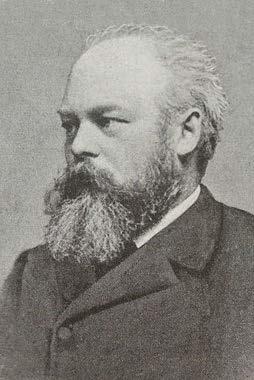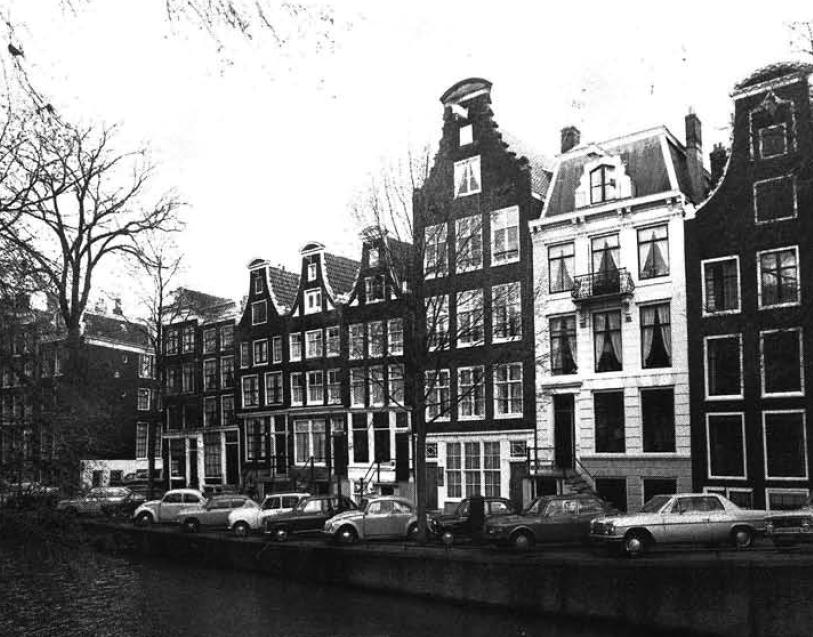A History of Dutch Housing









































































Housing production Housing demolition 20.000 40.000 10.000 60.000 80.000 100.000 120.000 140.000 Housing production Housing demolition 20.000 40.000 10.000 60.000 80.000 100.000 120.000 140.000 1909: Housing association Rochdale Amsterdam Van Beuningenstraat 1903 Traditional building methods De Driehoek Tolhuislaan, Rotterdam 1921 1924 Kossel system Stulemijer Bloemhof, Rotterdam 1949 Brick Montage Bouw (BMB-system) 1951 1953 Systeem Welschen Welschen Overschie, Rotterdam 1951-1973 MUWI system MUWI-flat Zuidwijk| Slotermeer| Rotterdam 1951-1973 MUWI system MUWI-flat Zuidwijk| Slotermeer| Rotterdam 1960 1992 Dura-Coignet system Dura-Coignet dwelling| Rotterdam| 1960 1960 1992: Dura-Coignet system 1975 Efficient prefab systems
1800 1900 2000 Garden City IJsselmonde Development 1813: King William accedes to power 1813: King William accedes to power 1818: Establishment the Maatschappij van Weldadigheid (Benevolent Society) Modernisation of Infrastructure 1824: Dutch Trading Company 1831: Belgian Revolution 1840: Chorea Outbreak in NL Labour and Housing Shortages in the Netherlands Greater recruitment of Foreign Workers Colonial trade Large scale migration to cities 1899: average dwelling occupancy was five people & > 60 % of dwellings consisted of not more than two rooms 1860: Major Textile Development in NL 1860: Establishment the consumer cooperative move ment 1868: Establishment Bouwmaatschappij tot verkrijging van eigen woningen (Building Company for the acquisition of self-owned dwellings) 1861: First mortgage Bank in NL 1862: The Homestead Act 1874: AMS Health board looks to improve living conditions 1918: Destijl Manifesto 1914: World War begins 1914: Refugee crisis Belgium, Polish and Germans 1900: Industrialization begins 1939: World War 2 begins 1946 After the second world war of the 2,2 million homes half a million is damaged or destroyed. 1949 The completion of 50.000 post war homes is celebrated in Tiel. 1951 11.000 of 58.000 planned prefab dwellings are finished. 1955 The completion of the 500.000 post war homes is celebrated in Groningen. 1958 The record of 89.037 completed homes is reached. 1960 Political crisis about whether government funding should go towards the development of 2.500 dwellings. 1962 In Zwolle the first million post war homes in the Netherlands are completed. 1965 The discovery of natural gas reserves leads to high rise construction. Central heating is added to post war homes. 1970: Start of ‘experimental’ housing. 1970: Follow-up migration 1960: Former colonies 1972: Housing production is increased to 155.000 homes. 1974: Government focus shift from rent towards home ownership. 1975: Suriname independance 1977: Communist seizure in Vietnam 1989: The bill for public housing (De nota Volkshuivesting) is published. 1992: Vinex-locations are selected as expansion areas for city’s. 2001 The bill Mensen, Wensen en Wonen is introduced and focuses on demolition. The amount of dwelling that is set to be demolished is tripled. 2002 The housing production reached it’s lowest point since the 50’s. 1918: World War ends 1950: Guest workers 1945: World War 2 ends 1921: 19,298 Dwellings built 1921: Introduction prefabricated exterior waIl by D. Greiner 1921: Expansion Housing Act 1931: Expansion Housing Act 1917: Establishment De Stijl 1913: Establishment the nationale Woningraad 1842: Establishment Maatschappij tot Bevordering der Bouwkunst 1919: Establishment Bond van Nederlandse Architecten 1929: Establishment the Commissie voor den Hoogen Bouw 1930: National Urban Plan 1947: Establishment the 1947 Ministerie van Volkshuisvesting, Ruimtelijke Ordening en Milieubeheer (VROM 1934: Establishment the Commissie voor de Goedkoope Woning 1968: Establishment the De Nationale Stichting Nieuwe Woonvormen (SNW) 1936: End the Commissie voor de Goedkoope Woning 1918: post-war housing crisis 1918: Agricultural Workers Act 1945: post-war housing crisis 1945: Post War, National Planning Agency 1941: Establishment National Planning Agency 1915: the Amsterdam School 1915: SociaalTechnische Vereeniging van D.I. & A. Building competition 1912: The opening of the closed garden Amsterdam 1919: Berlage publishes Schoonheid in Samenleving 1919: quality standard for public housing established 1928: Congrès Internationaux d’Architecture Moderne (CIAM) is founded 1920: Financial crisis 1980: Financial crisis 1980: Start so-called asylum migration 1990: Afghanistan invastion 1992: Balkan War 1979: Oil crisis 1973: Oil crisis 2008: Financial crisis 2014: Civil war in Syria and Middle East 2021: Taliban seizure of power in Afghanistan 2022: Russia-Ukraine war Depression year of 1933 1929: The Great Depression refugees with the lowest production year of housing 1932: proposal, ‘De Organische Woonwijk in Open Bebouwing’. 1933: Tenant resistance and rent protection The affordability of housing 1927: Establishment ‘De 8’ 1934: Competition for Inexpensive Workers’ Dwellings. 1937: The first Dutch strokenbouw completed 1951: Introduction of the Rental Act 1956: National Mortgage Guarantee and Home Ownership 1958: First major land-use planning memorandum 1960: Introduction of the Nota Ruimtelijke Ordening 1961: Introduction of the Monuments Act 1962: New Housing Law 1962: Introduction of the Natural gas Nota 1966: Introduction of the Tweede Nota Ruimtelijke Ordening 1973: Introduction of the Derde Nota Ruimtelijke Ordening 1974: Introduction subsidy for insulation 1973: Introduction of the Antikraak act 1988: Introduction of the Vierde Nota Ruimtelijke Ordening 2001: Introduction of the Vijfde Nota Ruimtelijke Ordening 2000: The third architectuurnota Ontwerpen aan Nederland 1988: Introduction of the Nota volkshuisvesting in de jaren negentig 1994: Introduction of the Vierde Nota Ruimtelijke Ordening Extra 1992: Introduction nota Landschap 1991: VINEX 1992: New Housing Law 1993: Introduction nota over architectuurbeleid Ruimte voor Architectuur 1996: Introduction Visie Stadslandschappen 1996: The second architectuurnota De architectuur van de ruimte 1995: Housing associations were privatized 2004: Introduction
the Nota Ruimte 2006: Housing for special target groups (Care at home) 2008: New WRO, Tension between centralization and decentralization 2010: ending Ministerie van Volkshuisvesting, Ruimtelijke Ordening en Milieubeheer (VROM) 2014: Parliamentary inquiry into housing associations 2017: National Housing dissapears Influx of Refugees come to the Netherlands 2030: Million extra homes by 2030 1968:
1976:
Volksverhuizing 1983: Introduction Bouwbesluit 1980: Introduction of the Nota De zorg voor de omgeving 1983: Introduction Actieprogramma deregulering (woning) ouwregelgeving 1975: Introduction of the Nota huisvesting alleenstaanden en tweepersoonshuishoudens 1977: Introduction of the Interim Saldo Regeling (ISR) 1976: Introduction individual housing allowance 1985: Introduction of the Stadsvernieuwingsfonds and end of the ISR 1985: Introduction of the Wet op de stadsen dorpsvernieuwing 1991: the first architectural policy memorandum published by the ministries of WVC and VROM 1918 Housing Congress Berlage proposes standardized housing Housing Act of 1902 1903: The housing association Rochdale Housing becomes a National concern 1878: European Agricultural Depression 1869: Suez Canal Opening 367% AMSPopulation HaarlemPopulation RotterdamPopulation ArnhemPopulation 1341 743 14 22% 60% 347% 286% 240% 1839: First Railway in Netherlands 1887: Society for the general welfare sponsors an investigation into the housing of the workers’ class 1896: The Question of Social Housing was published 1910: Amsterdam School 1905: Garden City is introduced to Dutch context 1903: Raymond Unwin’s Nothing gained by Overcrowing published 1909: Raymond Unwin’s Town Planning in Practice is published 1909: Amsterdam Housing Council’s Report 1908: ‘Maatschappij tot Bevordering der Bouwkunst’ buildingcompetition 1894: Social Democratic Workers’ Party established 1896: Introduction system of erfpacht Amsterdam 1860: Law Prohibiting ‘closed off areas” 1851: Vereeniging ten behoeve van de arbeidersklasse (Association for the working class) is founded 1854: Het rapport van het Koninklijk Instituut van Ingenieurs over huisvesting en gezondheid Financial Speculation directed abroad Burgher houses Seventeenth and eighteenth centuries Amsterdam Leidsegracht 1830: Rural poverty Plaggenhutten 1884: Agneta Park HousesbuiltforNederlandscheGistenSpiritus Fabriek. J.e. van Marke. Delft 1917-20: Housing association Amsterdam, Zaanstraat Oostzaanstraat M. de Klerk Amsterdam Henriette Ronnerplein 1921 M. de Klerk 1924-27: Municipal housing Hoek van Holland 2e Scheepvaartstraat J.J.P. Oud 1924: Schröder house Utrecht,PrinsHendriklaan G.Th. Rietveld Schröder-Schräder 1929-32: Private sector housing Amsterdam, Victorieplein J.F. Staal 1910-17: Factory housing Philipsdorp Philips Glveilampenfabriek, Eindhoven 1918-20: Municipal housing Spangen Rotterdam J.J.P. Oud 1920-23:MunicipalhousingTusschendijken Rotterdam J.J.P. Oud 1922-23:Semi-permanentmunicipalhousing Oud Mathenesse Rotterdam J.J.P. Oud 1925-29: Municipal housing Kiefhoek Rotterdam J.J.P. Oud 1927-30: Private sector housing Nirwana flats The Hague, Benoordenhoutseweg Duiker, J.G. Wiebenga 1933-34: Housing association ‘Volkswoningbouw Rotterdam’ Bergpolder, Rotterdam Brinkman, L.c. van der Vlugt, W. van Tijen 1945-1960: Post-war Housing Slotermeer-Noordoost F. Berghoef Slotermeer-Noordoost Staal Bijlmermeer Amsterdam F. Ottenhof, Kromhout & Groet, Rijnboutt 1970 Bloemkoolwijken de Merenwijk -1971 Leiden 1990 Vinexwijken de Merenwijk -1998- Leidsche Rijn 2010 Eco-friendly, highrise living Valley MVRDV 2021 Amsterdam 1968 -1980 Experimental Housing in the Netherlands Kubuswoningen 1977 Rotterdam P. Blom 1919-21: Municipal housing Spangen Rotterdam M. Brinkman 1931-34: Housing association ‘Eendracht’ Rotterdam (Blijdorp), Vroesenlaan J.H. van den Broek 1915: Extension plan for Amsterdam South H.P. Berlage 1913: Garden Village Vreewijk, Rotterdam H.P Berlage 1915: Garden village Heyplaat Rotterdamsche Droogdok Maatschappij Rotterdam H.A.J. Baanders 1912: Housing association Rochdale Amsterdam, Molukkenstraat J.E. van der Pek 1919: Housing association ‘Het Westen’ Amsterdam, Zaanhof H.J.M. Walenkamp 1919-22: Housing association ‘Tuinwijk Zuid’ Haarlem J.B. van Loghem 1919: Expansion plan for Amsterdam H.Th. Wijdeveld 1911: Garden village Het Lansink K. Muller 1905: Design for world capital The Hague K.P.C. de Bazel 1909: Expansion Plan for Hauge The Hague Berlage Grill’s Hofje Amsterdam 1889: City Planning According to Artistic Principles is published Camillo Sitte (1843-1903) Hendrik.P Berlage (1856-1934) J.P Oud (1890-1963) Michel de Klerk (1884-1923) Number of Building Associations Percentage dwellings with two rooms or less Homes for Sale Totalmoterizedvehicle Bid above asking price PrivateCars 140,000 10,000 80% 175,000 10,000,000 9,000,000 Hordijkerveld 1960 Groenenhagen 1962 Centre 1963 2004: Master Plan Development 2021: Master Plan Development 2022: Street art development 2022: Locally made communal cafe and garden 2022: Current condition in Hordijkerveld Kreekhuizen 1958 Reyeroord 1960 1980 Infills in IJsselmonde Original archive elevation post war housing IJsselmonde 00’s Developments Tuinenhoven 1962 1854-55: Housing Association Ar. Arnhem, Zuidstraat 1877 :Housing association Amsterdamsche 1884: Amsterdamse Housing Association Roggeveenstraatf Dirk Hartoghstraat 1965: Garden City in South of Rotterdam 1960s: Winkelcentrum Keizerswaard: introverted Pavillions 1938: IJsselmonde 1958: Sportsdorp 1958: Oil Drilling 1750 1850
of
Introduction of the nota De toekomst van het oude woningbestand
Introduction of the Nota
